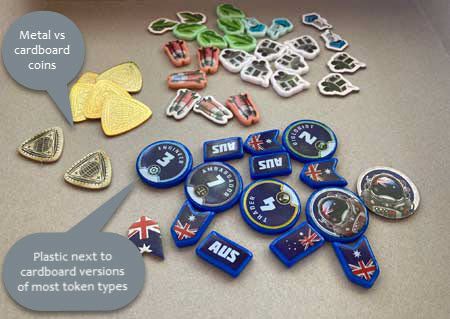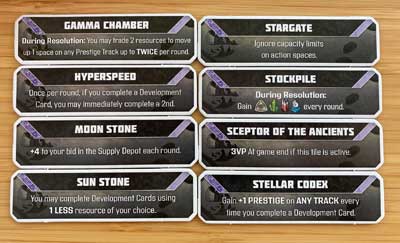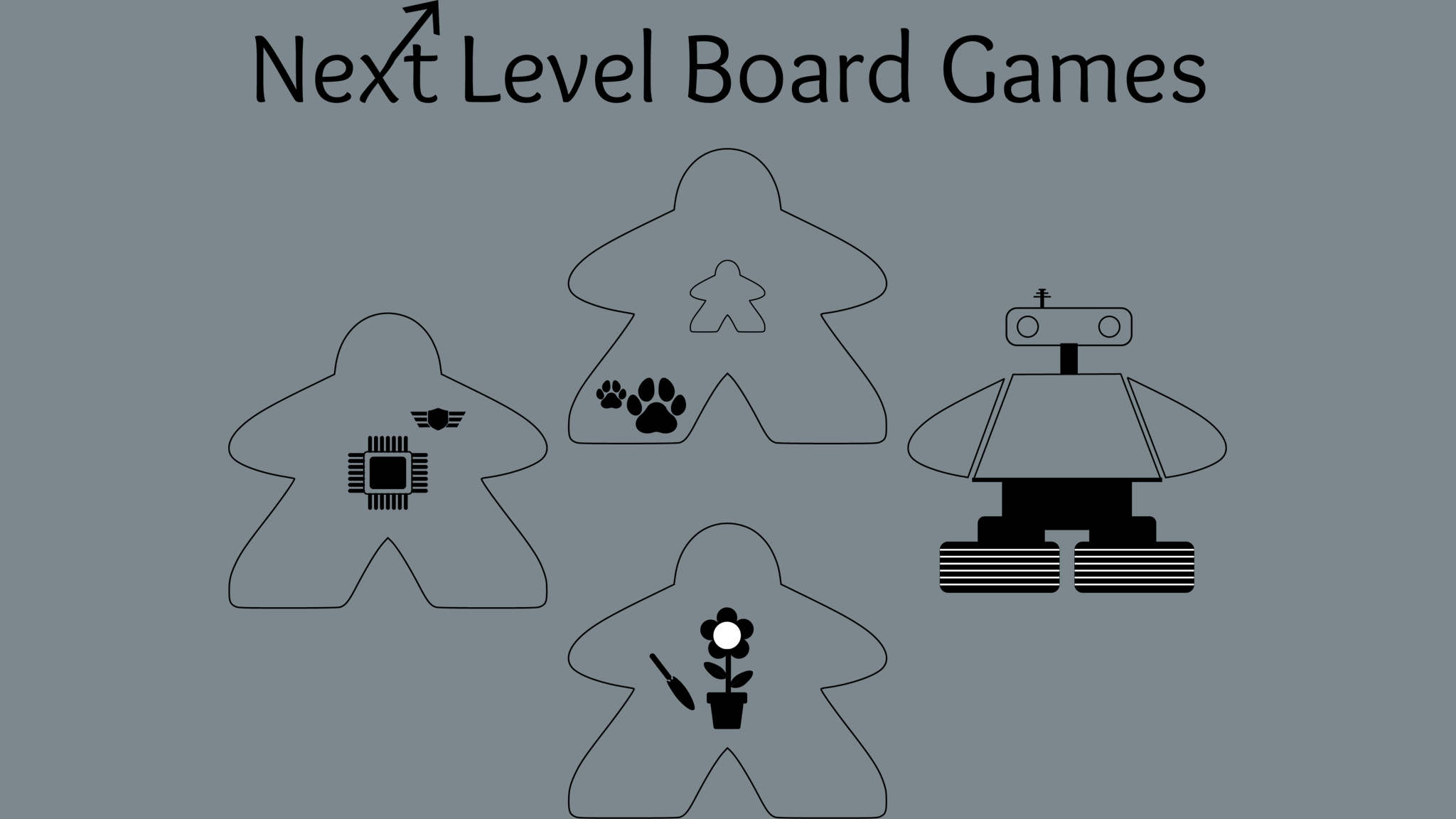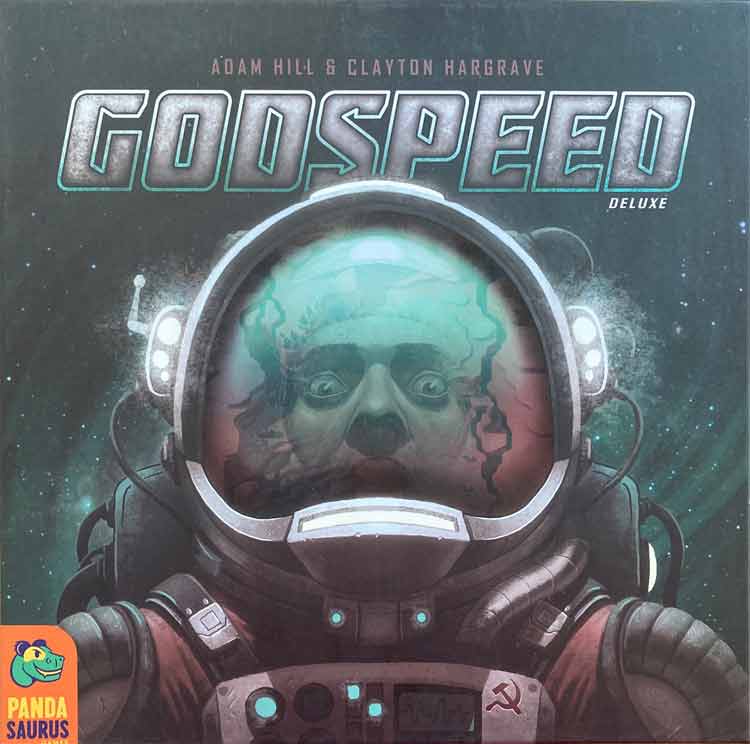Godspeed is a game published by Pandasaurus Games. The game premise surrounds the space race. Each player chooses a country to represent, and from there all players race to colonize the new planet more successfully than the other players. The player with the most victory points is declared the winner and there are several ways to earn victory points.
This post is broken into the following 3 sections, feel free to jump directly to one:
- General summary - consisting of information about overall enjoyment, theme, replayability, and upgrades
- Complexity - consisting of information about the rulebook, setup, player turns, and overall learning curve
- Player turns - consisting of game type, game flow, rule you are likely to miss, and favorite aspect
General summary
Number of players we had: 4
Our play time (not including setup): 2.5 hours
Overall enjoyment

Everyone in our game group enjoyed playing Godspeed. Our group consisted of four players, with varying levels of game play. Because of the way this game is played, we all learned it together in a way that didn't leave anyone behind. This game is composed of 10 rounds, each with 4 phases, but it plays pretty quickly.
At its heart, it is a worker-placement game, but the way the phases play is different so it is not as worker placement heavy as some games are. Also, the board is two-sided, one side is for 2-3 players while the other is for 4-5 players. Games with 3 and 5 players are definitely more challenging based on the game board itself.
If I had to pick something some players might find frustrating, play spaces can be limited. If you plan moves that someone else beats you to, you may have to wait for the next round to accomplish what you intended.
Theme

The space theme this game is built upon is well ingrained in the board, the cards, and the game pieces. It also carries over to the names of items, things like "Relic Tiles", and having rovers as a possible resource.
Replayability

There is a decent amount of replayability created in the following ways:
- There are five 2-sided nation boards, meaning you can play the game as one of 10 different nations. There are four different types of resources each nation can produce at the beginning of each round. Each nation begins the game with one of the four enabled. This means each player will produce resources from the start, but they are not likely to be the same resource.
- There are four different types of development cards and each type has 36 cards. The resources it takes to complete development cards varies and some have special end-of-game bonuses or instant bonus opportunities. With so many cards, drawing the same card should take several replays to occur.
- Without getting too much into game play, there are several different ways to be strategic. There are also many ways to gain victory points. These variations combined provide a decent amount of replayability without players losing interest.
Upgrades

This game had several possible upgrades when I backed it on Kickstarter. Originally I purchased the Deluxe Edition, which came with 40 metal coins. These coins were a focal point when we opened the game, with everyone impressed by their weight and design (they come in just under 10 oz). There were also upgrades to plastic tokens that I originally passed on, but was later able to order directly through Pandasaurus and they were also well worth the cost.

NOTE: The only drawback to the very cool upgraded tokens is that the small flags that go on the prestige track do not stack well. When two players are tied at the same spot, you have to be really careful stacking their tokens as they slide easily because they are slick and will run into other player tokens, which does not happen with the original punch-out tokens.
Complexity
Rulebook
We found the rulebook to be easy to follow and broken down into sections that make sense for learning and referencing later. Because the game is broken into phases, the first time we played, we played each phase as we learned it to get a feel for how it worked. After the first round we were able to play through the phases while only referencing the rulebook here and there.
Setup
Game setup is pretty straight forward, there are several pieces and tokens, but if you follow the rulebook, these are broken down into understandable steps that do not take very long to accomplish.
Turns
This game is fairly unique in how each of the four phases in a round plays. Without getting too deep into how to play this game, because there are several other places to find this kind of information that do that VERY well, I will say that phases 1, 2, and 4 are played somewhat simultaneously so they go fast.
Phase 3, the Actions phase, is where each player chooses two actions using their remaining team members (each round you begin with five team members capable of different things). However, since you only get two actions during this phase, it does go fast. There are some notable exceptions to the two team member rule, like having acquired an extra team member during the auction phase.
All in all, even the actions phase goes fairly quickly since each player only has two actions to take. The only thing that slows this down is when another player plays in an area you intended to and now you have to rethink your play. Still, in general, we did not suffer any sufficient lag time between turns where players got bored as we often have with other games.
Overall learning curve
Due to the simultaneous style of ¾ of the phases, the individual learning curve is curtailed in this game. While strategic players can flex their game play muscles, they don't automatically leave novice players behind which is a huge benefit if you have players in your group who are less into gaming or less experienced.
Player Turns
Play type
As mentioned above, this is at heart a worker-placement game but with a twist that keeps it interesting and the play moving faster. While each nation begins with a different resource, it is still one resource of four so play is symmetrical.
Game flow
This game flows more fluidly than some. Having three out of four phases played somewhat simultaneously lends to this nature and we liked that aspect. Also, with 10 defined rounds, the game does not drag on or seem too long. Instead, you find yourself scrambling to accomplish everything you set out to do, which leads to wanting to play again.

Rule you are likely to forget
Pay close attention when setting up the supply deck. There are numbers on the bottom of the back of these cards that represent how many players there are. For instance, if you have three players, you will only use the cards with 3+ on the back and ignore all others. These cards also have season numbers from 1-3 on the back and the game will be impacted if you do not separate and order these with the Relic Power stack as instructed. The first time we set up the game we got this slightly wrong. Then we did it again on the third play because we took for granted we knew what we were doing. Now we carefully follow the instructions in this section.
Second, the victory points given for your influence on the prestige track is not based on the number your influence rises to, but rather where you are in comparison to all the other nations!
Favorite aspect
As mentioned before, there are SEVERAL ways to be strategic with this game. For instance, you gain victory points for being the first to accomplish several different goals, by beating other nations on the prestige track, for having relic tiles, for leftover resources, and much more!
Additionally, it is not always easy to tell who is winning so in that aspect it has a European style game feel. I personally prefer games where you cannot tell who is winning the entire game as I think this allows players to better focus on their own game instead of worrying about who is ahead. I also think it is more inclusive and fun for players who are less experienced.
Overall, I definitely feel like I got the value of what I paid for this game, upgrades included. I can see this game staying on the shelf for years to come - and trust me, those shelves are full!


